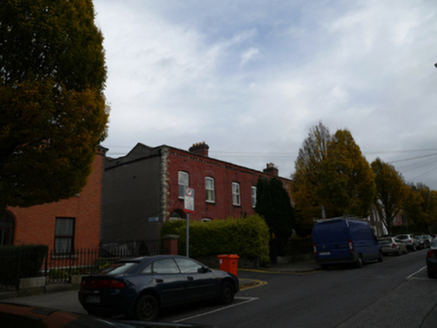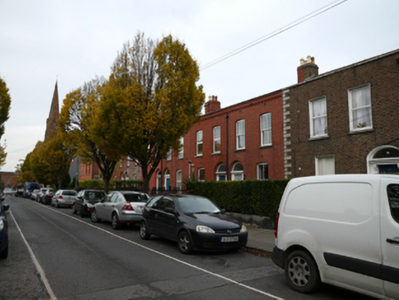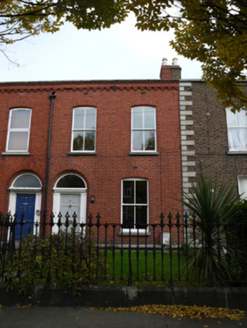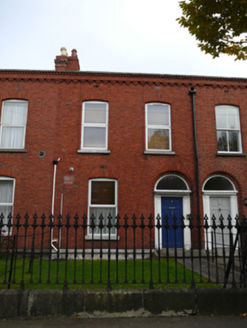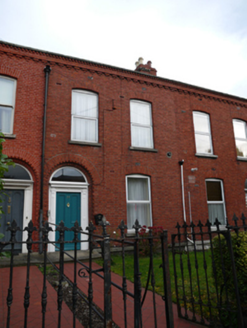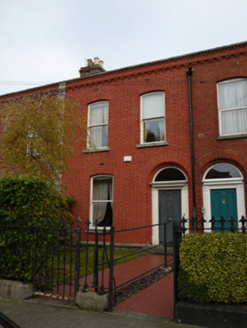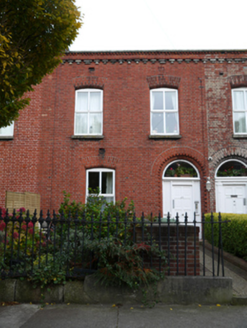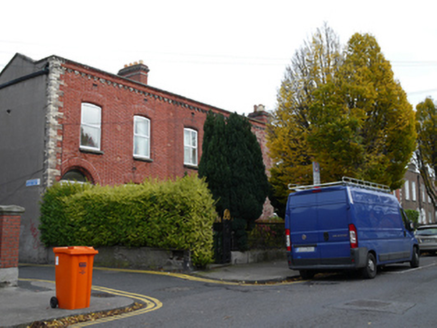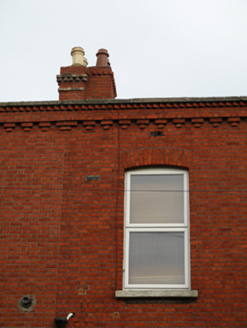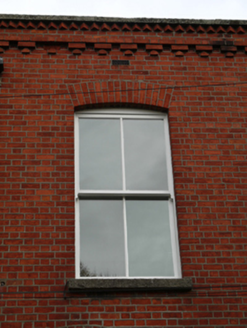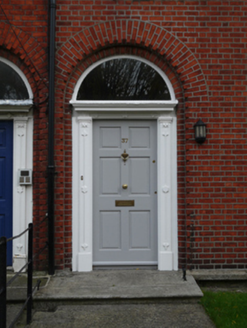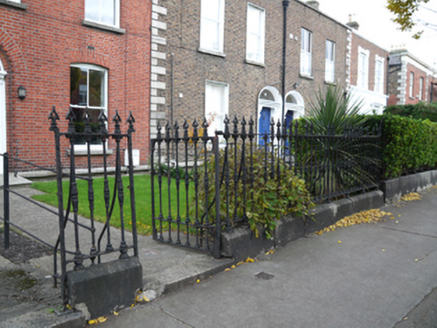Survey Data
Reg No
50080958
Original Use
House
In Use As
House
Date
1860 - 1880
Coordinates
315205, 232616
Date Recorded
15/11/2013
Date Updated
--/--/--
Description
Terrace of seven two-bay two-storey houses, built c.1870, having two-storey returns to rear (east) elevations. M-profile pitched slate and artificial slate roofs. with parapet having cut granite capping over corbelled and sawtooth red brick cornice, with yellow brick details to nos.41 to 43. Red brick chimneystacks having yellow brick sawtooth cornices. Red brick walls laid in Flemish bond, with cut granite plinth course, nos.41 and 43 having yellow brick quoins. Rendered walls to north gable and rear elevations. Segmental-headed window openings, some having bull-nosed brick reveals, cut granite sills, two-over-two timber sash windows, and replacement uPVC windows. Round-headed door openings having sawtooth brick reveals, plain fanlights, timber door surrounds having pilasters, friezse and cornices, surrounding timber panelled doors, approached by cut granite steps with cast-iron bootscrapes. Front gardens enclosed by cast-iron railings on cut granite plinth walls, with cast-iron gates. Cut granite steps between footpaths and gates. Some tiled garden paths.
Appraisal
This terrace retains much of its early form and character, and fabric including handsome doorcases, timber sash windows and decorative ironwork. It shares overall scale and proportions with neighbouring terraces, resulting in a coherent streetscape. The streets in this area were built by private developers in groups of as few as two or three, leading to a lively and attractive variation in decorative finishes of houses built in similar materials. The front garden boundaries remain intact, maintaining the early suburban character of the street. The area of Portobello, including Bloomfield Avenue, began to develop following the opening of the canal harbour in 1801.
